Forest Management Techniques for Wildlife Habitat Preservation
- August 6, 2024
- 0 comment
Forest management techniques for wildlife habitat preservation encompass a broad spectrum of practices designed to maintain and enhance the natural environment in which wildlife thrives. These techniques include creating and maintaining diverse habitat structures, such as mixed-age forests, which provide varied shelter and food sources for different species. Sustainable logging practices, such as selective cutting and shelterwood cutting, help ensure that forest regeneration is balanced with habitat needs, avoiding the disruption of critical wildlife areas.
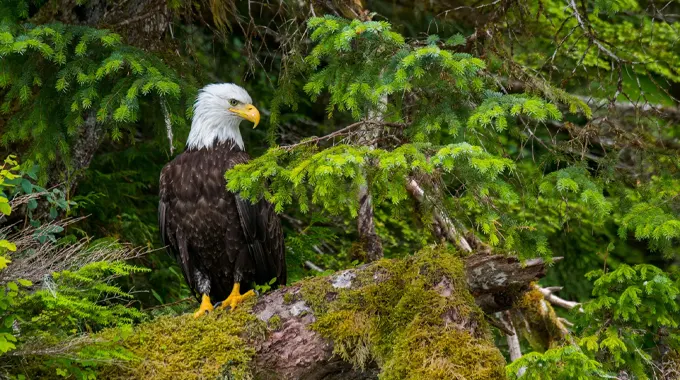
Additionally, maintaining buffer zones around water bodies, known as riparian zones, protects aquatic habitats and the species that depend on them. Controlling invasive species is another crucial aspect, as these species can outcompete native flora and fauna, leading to a decline in biodiversity. Prescribed burning, a controlled use of fire, helps to mimic natural fire cycles, promoting the growth of native vegetation and the habitats they support. By integrating these techniques, forest managers can create a harmonious balance between forest use and the preservation of wildlife habitats, ensuring that ecosystems remain robust and diverse for future generations.
List of Forest Management Techniques for Wildlife Habitat Preservation
- Wildlife Habitat Structure and Diversity
- Sustainable Logging Practices
- Riparian Zone Management
- Invasive Species Control
- Prescribed Burning
- Creating Wildlife Corridors
- Monitoring and Assessment
- Community Involvement and Education
Wildlife Habitat Structure and Diversity
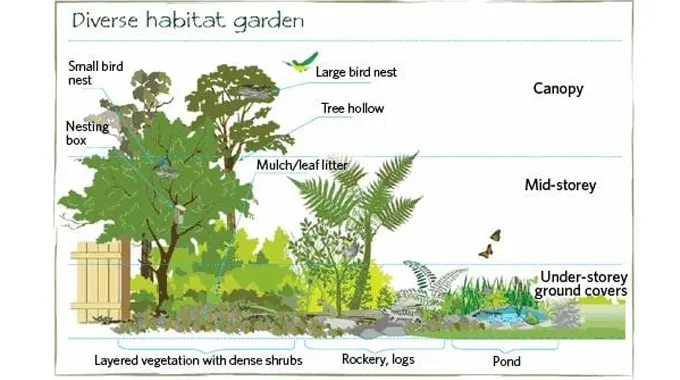
Creating Mixed-Age Forests
One of the key strategies in forest management for wildlife habitat preservation is the creation of mixed-age forests. This approach involves maintaining a variety of tree ages and species within the forest. Mixed-age forests provide a range of habitats that support diverse wildlife species. Older trees offer nesting sites and shelter, while younger trees provide different food resources and habitats. This structural diversity is crucial for maintaining the ecological balance and ensuring the survival of various species.
Maintaining Structural Diversity for Various Species
Structural diversity within a forest is essential for supporting a wide range of wildlife. This includes ensuring a mix of canopy cover, understory vegetation, and ground cover. Canopy cover provides critical shade and shelter, while understory plants offer food and habitat for smaller animals. Ground vegetation, such as fallen logs and leaf litter, supports decomposers and other ground-dwelling species. By maintaining these various layers, forest managers can create a habitat that meets the needs of different wildlife species.
Importance of Canopy Cover, Understory, and Ground Vegetation
Each layer of the forest plays a vital role in the overall ecosystem. Canopy cover regulates temperature and moisture levels, creating a stable environment for species that live in the upper parts of the forest. The understory offers protection and resources for animals that prefer denser foliage, while the ground layer provides essential nutrients through decomposition processes. Together, these layers contribute to a healthy and dynamic forest ecosystem that supports a wide variety of wildlife.
Sustainable Logging Practices
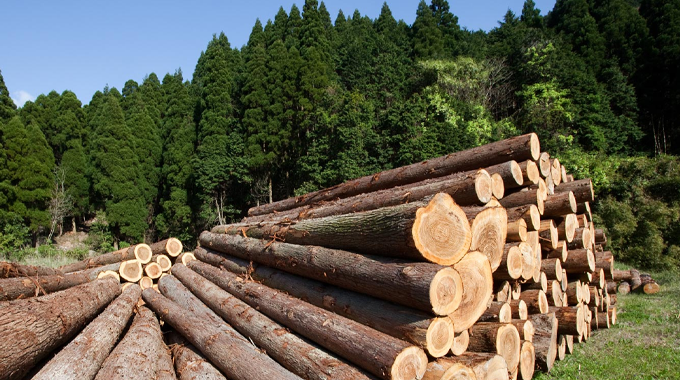
Selective Cutting and Its Benefits
Selective cutting is a sustainable logging practice that involves carefully choosing which trees to harvest. This method minimizes the impact on the forest ecosystem by preserving the overall structure and composition of the forest. Selective cutting helps maintain habitat diversity, allowing wildlife to continue thriving even after logging activities. By removing only specific trees, forest managers can ensure that the remaining trees continue to provide necessary habitats and resources for wildlife.
Shelterwood Cutting Methods
Shelterwood cutting is another sustainable logging technique that involves removing trees in phases. This method ensures that young trees have enough light and space to grow while still providing shelter for wildlife. The gradual removal of trees mimics natural disturbances, promoting regeneration and maintaining habitat continuity. Shelterwood cutting helps create a balanced forest structure, supporting a diverse range of species throughout the process.
Minimizing Habitat Disruption During Logging Operations
To preserve wildlife habitats, it is crucial to minimize disruption during logging operations. This includes planning logging activities carefully to avoid critical breeding and nesting periods, using low-impact logging equipment, and creating buffer zones around sensitive areas. By taking these precautions, forest managers can reduce the negative effects of logging on wildlife and ensure that habitats remain intact and functional.
Riparian Zone Management
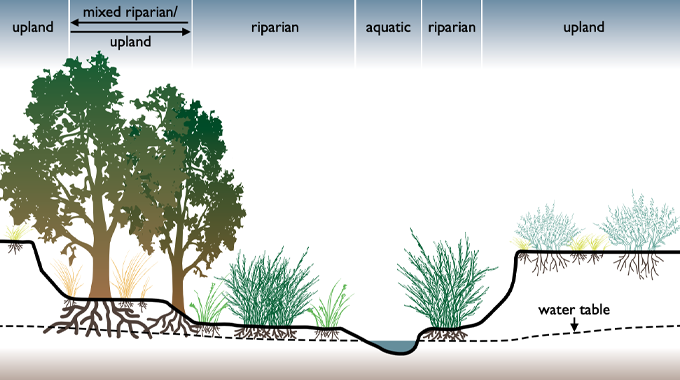
Definition and Significance of Riparian Zones
Riparian zones are the areas of land adjacent to water bodies, such as rivers, streams, and lakes. These zones are vital for maintaining healthy aquatic ecosystems and supporting wildlife. Riparian zones act as natural buffers, filtering pollutants and preventing erosion. They also provide critical habitats for many species, offering food, water, and shelter.
Techniques for Protecting Water Bodies and Aquatic Habitats
Protecting riparian zones involves implementing various techniques to preserve water quality and habitat integrity. This includes maintaining vegetation along the water’s edge, controlling runoff from agricultural and urban areas, and preventing sedimentation. By protecting these areas, forest managers can ensure that aquatic habitats remain healthy and vibrant, supporting a wide range of wildlife species.
Buffer Zones and Their Role in Habitat Preservation
Buffer zones are areas of protected land surrounding riparian zones and other sensitive habitats. These zones act as barriers, reducing the impact of human activities and protecting the core habitat areas. Buffer zones help maintain the ecological integrity of riparian zones, ensuring that they continue to provide essential services and habitats for wildlife.
Invasive Species Control
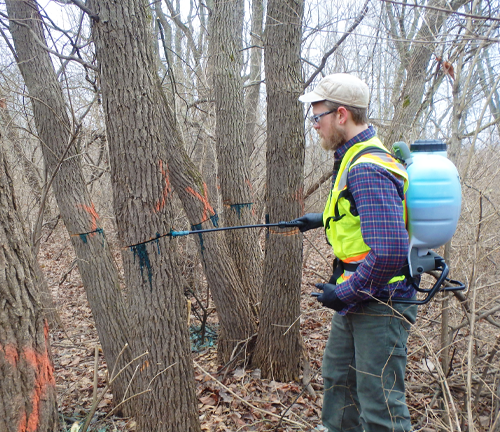
Identifying and Managing Invasive Species
Invasive species pose a significant threat to native wildlife and habitats. Identifying and managing these species is a crucial part of forest management. This involves monitoring for new invasions, understanding the behavior and impact of invasive species, and implementing control measures. Early detection and rapid response are essential to prevent invasive species from becoming established and spreading.
Impact of Invasive Species on Native Wildlife
Invasive species can outcompete native species for resources, disrupt food webs, and alter habitat structures. This can lead to a decline in native wildlife populations and a loss of biodiversity. Managing invasive species is critical to preserving the balance and health of forest ecosystems, ensuring that native species continue to thrive.
Methods for Controlling and Eradicating Invasive Plants and Animals
Controlling and eradicating invasive species requires a combination of techniques. This can include mechanical removal, chemical treatments, biological control, and habitat restoration. Each method has its advantages and challenges, and a combination of approaches is often necessary to effectively manage invasive species and protect native habitats.
Prescribed Burning
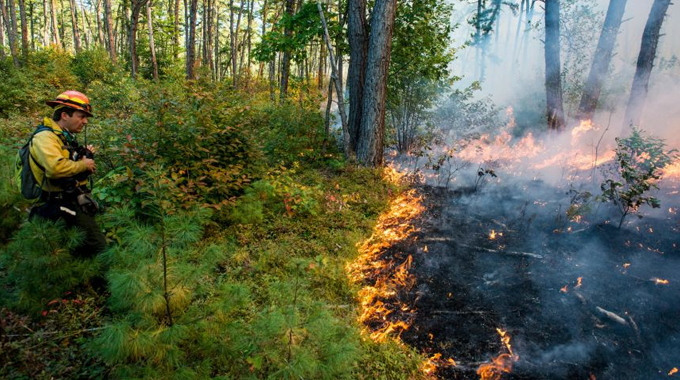
Explanation of Prescribed Burning and Its Benefits
Prescribed burning is the controlled use of fire to manage forest ecosystems. This technique helps mimic natural fire cycles, which are essential for maintaining healthy forests. Prescribed burns can reduce the buildup of flammable materials, promote the growth of native vegetation, and create diverse habitats for wildlife. When conducted carefully, prescribed burning can enhance the resilience and productivity of forest ecosystems.
Mimicking Natural Fire Cycles
Natural fire cycles play a crucial role in shaping forest landscapes. By mimicking these cycles through prescribed burning, forest managers can maintain the ecological processes that support diverse wildlife habitats. Fire helps to clear out underbrush, release nutrients into the soil, and stimulate the growth of fire-adapted plant species. This, in turn, creates a dynamic and diverse habitat that supports a wide range of wildlife.
Promoting Native Vegetation Growth and Habitat Renewal
Prescribed burning can promote the growth of native vegetation by removing invasive species and providing optimal conditions for native plants to thrive. The renewed growth of native plants creates habitats that are well-suited for local wildlife. Additionally, the mosaic pattern created by burned and unburned areas can provide a variety of habitats, supporting different species and promoting biodiversity.
Creating Wildlife Corridors
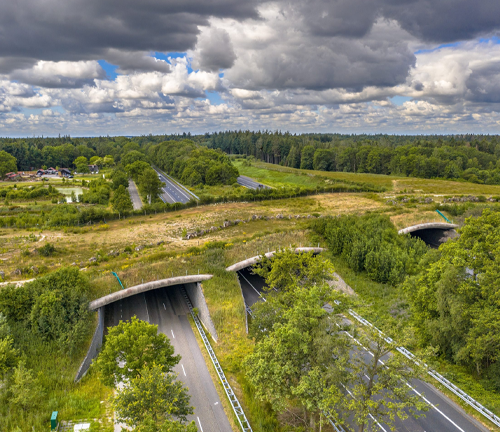
Importance of Connectivity Between Habitats
Wildlife corridors are essential for maintaining connectivity between habitats, allowing animals to move freely and safely across the landscape. These corridors help to prevent habitat fragmentation, which can isolate wildlife populations and reduce genetic diversity. By ensuring connectivity, wildlife corridors support healthy and resilient ecosystems.
Designing and Implementing Wildlife Corridors
Designing and implementing wildlife corridors involves identifying key habitat areas and creating pathways that connect them. This can include protecting existing natural corridors, restoring degraded areas, and creating new passageways through human-dominated landscapes. Effective wildlife corridors consider the needs of various species, providing safe passage and access to essential resources.
Benefits for Species Migration and Genetic Diversity
Wildlife corridors facilitate species migration, enabling animals to access different habitats and resources throughout the year. This is particularly important for species that rely on seasonal movements. Additionally, corridors help maintain genetic diversity by allowing individuals from different populations to interbreed. This genetic exchange is crucial for the long-term health and adaptability of wildlife populations.
Monitoring and Assessment
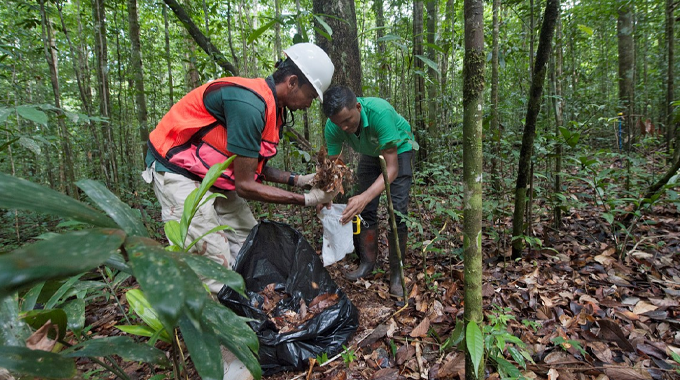
Importance of Monitoring Wildlife Populations and Habitats
Monitoring wildlife populations and habitats is essential for effective forest management. Regular monitoring provides valuable data on the health and status of ecosystems, helping managers identify changes and potential threats. This information is crucial for making informed decisions and implementing adaptive management strategies.
Techniques for Assessing Habitat Health and Biodiversity
Assessing habitat health and biodiversity involves a range of techniques, including field surveys, remote sensing, and citizen science programs. These methods provide insights into species abundance, habitat conditions, and ecological processes. By using a combination of techniques, forest managers can gain a comprehensive understanding of ecosystem health and biodiversity.
Adaptive Management Practices Based on Monitoring Results
Adaptive management is a flexible approach that involves adjusting management practices based on monitoring results. This iterative process allows forest managers to respond to changing conditions and emerging threats, ensuring that management strategies remain effective. Adaptive management promotes continuous learning and improvement, helping to achieve long-term conservation goals.
Community Involvement and Education

Engaging Local Communities in Habitat Preservation Efforts
Engaging local communities in habitat preservation efforts is vital for the success of forest management programs. Community involvement fosters a sense of stewardship and responsibility, encouraging residents to participate in conservation activities. By involving the community, forest managers can build support for habitat preservation and create lasting positive impacts.
Educational Programs and Outreach Activities
Educational programs and outreach activities play a crucial role in raising awareness about the importance of wildlife habitat preservation. These programs can include workshops, school programs, public talks, and volunteer opportunities. By educating the public, forest managers can inspire a new generation of conservationists and promote sustainable practices.
Collaborative Efforts Between Forest Managers, Scientists, and the Public
Collaboration between forest managers, scientists, and the public is essential for effective habitat preservation. These partnerships bring together diverse expertise and perspectives, enhancing the effectiveness of conservation efforts. By working together, stakeholders can develop innovative solutions and implement strategies that benefit both wildlife and human communities.
Frequently Asked Questions (FAQs)
1. What is the primary goal of forest management for wildlife habitat preservation?
The primary goal is to maintain and enhance the natural environment to support diverse wildlife populations by creating and preserving varied habitats, ensuring sustainable resource use, and protecting ecosystem health.
2. How does creating mixed-age forests benefit wildlife?
Mixed-age forests provide a range of habitats for different species, ensuring food, shelter, and nesting sites are available for both younger and older trees, thereby supporting a more diverse wildlife community.
3. What are sustainable logging practices, and why are they important?
Sustainable logging practices, such as selective cutting and shelterwood cutting, aim to balance forest regeneration with habitat needs, minimizing habitat disruption and ensuring long-term forest health.
4. Why are riparian zones important for wildlife habitat preservation?
Riparian zones protect water bodies and aquatic habitats, filter pollutants, prevent erosion, and provide essential resources and shelter for many wildlife species.
5. What challenges do invasive species pose to native wildlife?
Invasive species can outcompete native species for resources, disrupt food webs, and alter habitat structures, leading to a decline in native wildlife populations and biodiversity.
6. How does prescribed burning benefit forest ecosystems?
Prescribed burning helps mimic natural fire cycles, reduces the buildup of flammable materials, promotes the growth of native vegetation, and creates diverse habitats, all of which support a healthy and dynamic forest ecosystem.
7. What are wildlife corridors, and how do they help wildlife populations?
Wildlife corridors are natural passageways that connect fragmented habitats, allowing animals to move freely, access different resources, and maintain genetic diversity, which is crucial for species survival.
8. Why is monitoring wildlife populations and habitats important in forest management?
Monitoring provides essential data on ecosystem health and species status, enabling forest managers to make informed decisions, adapt management practices, and address emerging threats effectively.
9. How can local communities contribute to wildlife habitat preservation?
Local communities can participate in conservation activities, engage in educational programs, and collaborate with forest managers and scientists to support habitat preservation and promote sustainable practices.
10. What role does education play in forest management for wildlife habitat preservation?
Education raises awareness about the importance of habitat preservation, inspires conservation efforts, and equips the public with knowledge and skills to engage in sustainable practices and support forest management initiatives.

Gilbert Griffin
Forestry AuthorGilbert Griffin is a forest management expert specializing in sustainable practices, forest health, conservation, and land management. With extensive knowledge in pest control, disease management, and habitat restoration, Gilbert develops strategies to preserve forest ecosystems and biodiversity. Passionate about the natural world, Gilbert adapts to changes in forest management and stays updated through continuous learning. Gilbert also provides seasonal advice to optimize forest care throughout the year.

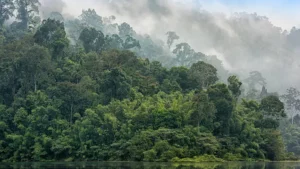
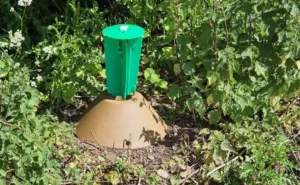



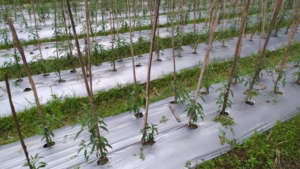



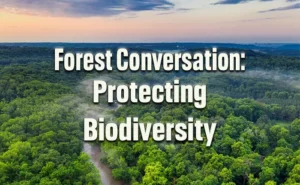

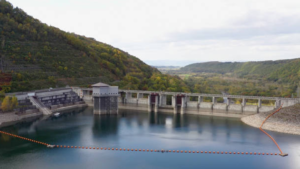
Leave your comment